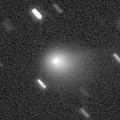
|
Now it is so bright as 10.8 mag (Aug. 21, Juan Jose Gonzalez). Getting lower graudally in the evening sky. It will be unobservable in late September in the Southern Hemisphere, or in mid October in the Northern Hemisphere. In the Southern Hemisphere, it will appear in the morning sky at 9 mag in 2013 February, then it keeps observable in good condition while fading slowly. In the Northern Hemisphere, it is hardly observable after 2013.
Date(TT) R.A. (2000) Decl. Delta r Elong. m1 Best Time(A, h)
Sept. 1 14 37.02 18 33.8 2.803 2.423 57 10.5 19:05 (132, 20)
Sept. 8 14 44.87 15 30.7 2.811 2.369 54 10.4 19:10 (125, 18)
|
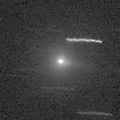
|
It brightened rapidly. Now it is very bright as 9.7 mag (Aug. 22, Juan Jose Gonzalez). It has a large coma. It keeps observable in the morning sky all through this apparition, although it locates somewhat low. It keeps bright at 10-11 mag until mid September.
Date(TT) R.A. (2000) Decl. Delta r Elong. m1 Best Time(A, h)
Sept. 1 7 29.08 17 1.1 1.302 0.971 47 11.1 4:55 (237, 14)
Sept. 8 7 55.57 14 31.3 1.349 1.005 47 11.4 4:45 (240, 14)
|

|
Now it is so bright as 11.5 mag (Aug. 6, Chris Wyatt). It is expected to be observable at 11-13 mag for a long time from 2012 summer to 2013 summer. It is not observable until 2013 January in the Northern Hemisphere. In the Southern Hemisphere, it will be extremely low from October to December.
Date(TT) R.A. (2000) Decl. Delta r Elong. m1 Best Time(A, h)
Sept. 1 11 41.29 -67 54.8 2.150 2.159 76 11.5 19:05 ( 26, 32)
Sept. 8 12 25.35 -64 58.3 2.220 2.138 72 11.5 19:10 ( 30, 32)
|
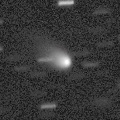
|
It is expected to be a great comet of -1 mag in 2013 spring. Now it is 11.6 mag (Aug. 8, Marco Goiato). Brightening faster than originally expected. In 2012, it keeps observable until October in the Southern Hemisphere. In the Northern Hemisphere, it will be unobservable soon. Then it keeps unobservable for a long time until 2013 March, when the comet will appear as a 0-mag great comet.
Date(TT) R.A. (2000) Decl. Delta r Elong. m1 Best Time(A, h)
Sept. 1 15 0.12 -25 24.0 3.549 3.363 71 12.0 19:05 ( 93, 53)
Sept. 8 15 1.47 -25 40.7 3.571 3.274 64 11.9 19:10 ( 88, 47)
|
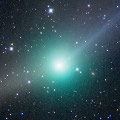
|
It kept as bright as 6-7 mag for a long time from 2011 summer to 2012 spring. Now it is not observable. It will appear in the morning sky again at 12.5 mag in October.
Date(TT) R.A. (2000) Decl. Delta r Elong. m1 Best Time(A, h)
Sept. 1 9 50.48 7 18.3 4.476 3.499 12 12.2 4:55 (266, -7)
Sept. 8 9 53.93 6 8.7 4.510 3.567 18 12.3 4:45 (265, -3)
|
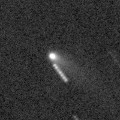
|
First return of a new periodic comet which brightened up to 14 mag in 2005. It brightened very rapidly and became much brighter than originally expected. Now it is very bright as 11.8 mag (Aug. 22, Juan Jose Gonzalez). It keeps observable in excellent condition at 12-13 mag from summer to autumn.
Date(TT) R.A. (2000) Decl. Delta r Elong. m1 Best Time(A, h)
Sept. 1 1 53.28 16 46.2 0.665 1.502 126 13.0 3:12 (180, 38)
Sept. 8 1 58.62 20 41.0 0.634 1.498 130 12.9 2:50 (180, 34)
|
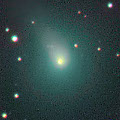
|
It brightened much faster than expected. Now it is so bright as 10.3 mag (Aug. 22, Juan Jose Gonzalez). In the Northern Hemisphere, it keeps observable at 11-13 mag in good condition until early 2013. Although it becomes extremely low in August, it will be getting higher again in the morning sky after September. In the Southern Hemisphere, it is not observable until late 2012.
Date(TT) R.A. (2000) Decl. Delta r Elong. m1 Best Time(A, h)
Sept. 1 9 54.40 43 38.8 2.914 2.191 36 13.0 4:55 (234,-26)
Sept. 8 9 58.46 41 38.7 2.900 2.211 39 13.0 4:45 (234,-23)
|
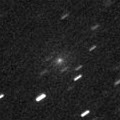
|
Now it is 15.4 mag (Aug. 11, Hidetaka Sato). However, it is extremely diffuse. The nuclear magnitude is fainter than 19 mag. Maybe the comet has been disintegrated, and will disappear soon. It keeps observable for a long time until December, but it keeps locating low in the evening after this.
Date(TT) R.A. (2000) Decl. Delta r Elong. m1 Best Time(A, h)
Sept. 1 14 1.06 8 2.4 1.781 1.359 49 13.6 19:05 (117, 22)
Sept. 8 14 22.52 4 46.4 1.760 1.332 48 13.5 19:10 (113, 22)
|
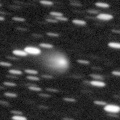
|
Now it is 13.0 mag (Aug. 21, Juan Jose Gonzalez). It keeps bright at 13-14 mag for a long time until 2014. It keeps observable for a long time in the Northern Hemisphere. It is not observable in the Southern Hemisphere.
Date(TT) R.A. (2000) Decl. Delta r Elong. m1 Best Time(A, h)
Sept. 1 21 39.39 55 19.3 5.686 6.181 115 13.6 22:54 (180, 0)
Sept. 8 21 28.65 54 19.0 5.650 6.167 116 13.6 22:16 (180, 1)
|
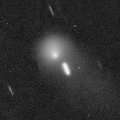
|
Now it is bright as 13.0 mag (Aug. 16, Jakub Cerny). It keeps bright as 13-14 mag for a long time after this until 2013. It is not observable in the Northern Hemisphere, but it is observable in good condition in the Southern Hemisphere.
Date(TT) R.A. (2000) Decl. Delta r Elong. m1 Best Time(A, h)
Sept. 1 5 0.37 -54 41.4 5.581 5.741 94 13.7 4:55 (330, 66)
Sept. 8 4 58.92 -55 13.2 5.568 5.757 95 13.7 4:45 (336, 67)
|

|
Big asteroid discovered in 1906. It suddenly showed the cometary activity on Dec. 11, 2010, probably due to an impact of a small object. Now it is 11.9 mag (May 29, Marco Goiato). It has already turned to be stellar.
Date(TT) R.A. (2000) Decl. Delta r Elong. m1 Best Time(A, h)
Sept. 1 16 31.73 -28 42.0 2.243 2.489 91 13.8 19:05 (106, 73)
Sept. 8 16 40.31 -29 11.0 2.335 2.495 87 13.8 19:10 ( 98, 68)
|

|
Now it is so bright as 11.7 mag (Aug. 17, Carlos Labordena). It will be unobservable in late September in the Northern Hemisphere, or in mid October in the Southern Hemisphere. But it will be observable at 13-14 mag in good condition again in 2013.
Date(TT) R.A. (2000) Decl. Delta r Elong. m1 Best Time(A, h)
Sept. 1 15 18.87 -12 48.2 5.460 5.236 72 14.1 19:05 (114, 50)
Sept. 8 15 17.62 -13 1.0 5.593 5.247 65 14.1 19:10 (106, 43)
|
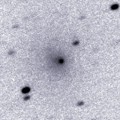
|
Now it is 12.9 mag (Aug. 14, Jakub Cerny). It will be observable until early September in the Southern Hemisphere. It is not observable already in the Northern Hemisphere.
Date(TT) R.A. (2000) Decl. Delta r Elong. m1 Best Time(A, h)
Sept. 1 12 39.84 -12 37.8 7.037 6.250 36 14.2 19:05 ( 87, 18)
Sept. 8 12 44.44 -13 4.1 7.095 6.249 30 14.2 19:10 ( 82, 12)
|

|
Now it is so bright as 12.4 mag (Aug. 17, Carlos Labordena). It will be too low to observe in the evening sky soon. But it will be observable at 12-14 mag in good condition again in 2013. However, it locates somewhat low in the Northern Hemisphere in 2013.
Date(TT) R.A. (2000) Decl. Delta r Elong. m1 Best Time(A, h)
Sept. 1 13 54.46 -3 7.5 3.546 2.989 49 14.5 19:05 (107, 28)
Sept. 8 14 3.17 -4 23.5 3.603 2.980 45 14.5 19:10 (102, 24)
|
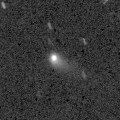
|
Now it is bright and visible visually at 13.5 mag (Aug. 21, Juan Jose Gonzalez). It keeps observable in good condition at 14 mag for a long time until winter. It locates somewhat low in the Southern Hemisphere.
Date(TT) R.A. (2000) Decl. Delta r Elong. m1 Best Time(A, h)
Sept. 1 23 50.50 39 50.9 2.562 3.295 129 14.6 1:10 (180, 15)
Sept. 8 23 48.96 39 40.0 2.499 3.277 133 14.5 0:41 (180, 15)
|
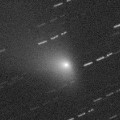
|
It approached to the sun down to 0.12 A.U. on July 14, and brightened up to 7.8 mag (July 22, Juan Jose Gonzalez). Now it is fading in the evening sky. But it is still bright as 10.5 mag (Aug. 21, Juan Jose Gonzalez). It will fade out rapidly in the evening low sky after this.
Date(TT) R.A. (2000) Decl. Delta r Elong. m1 Best Time(A, h)
Sept. 1 14 44.40 -1 36.6 1.397 1.271 61 14.7 19:05 (118, 36)
Sept. 8 15 6.77 -5 10.7 1.571 1.394 60 15.4 19:10 (112, 37)
|
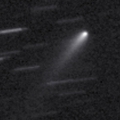
|
Now it is bright and visible visually at 13.7 mag (Aug. 21, Juan Jose Gonzalez). It is expected to approach to the earth and to be observable at 9-10 mag in good condition in winter. The condition is good in the Northern Hemisphere. In the Southern Hemisphere, it will be unobservable after this. But it will become observable in good condition after 2013 January.
Date(TT) R.A. (2000) Decl. Delta r Elong. m1 Best Time(A, h)
Sept. 1 15 8.86 45 7.6 1.891 1.776 67 14.9 19:05 (153, 2)
Sept. 8 14 59.83 44 9.8 1.890 1.701 63 14.7 19:10 (146, -1)
|

|
It kept as bright as 11-12 mag for a long time from 2011 autumn to 2012 spring. It is appearing in the morning sky now. It keeps observable in good condition until next spring while the comet will be fading gradually.
Date(TT) R.A. (2000) Decl. Delta r Elong. m1 Best Time(A, h)
Sept. 1 8 51.63 12 41.5 3.547 2.691 27 14.9 4:55 (253, 2)
Sept. 8 9 2.55 11 50.7 3.533 2.723 31 15.0 4:45 (253, 4)
|
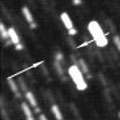
|
Now it is 14.5 mag (July 27, Jakub Cerny). In the Southern Hemisphere, it will be observable at 15-16 mag in good condition for a long time until 2013 summer. It is not observable at all in the Northern Hemisphere.
Date(TT) R.A. (2000) Decl. Delta r Elong. m1 Best Time(A, h)
Sept. 1 16 29.70 -81 31.6 3.626 3.892 97 15.2 19:05 ( 4, 43)
Sept. 8 16 24.43 -81 14.0 3.692 3.895 94 15.2 19:10 ( 6, 43)
|

|
This comet brightened up to 10 mag in outburst in 1995, however, it became lost after that. The condition of this apparition is bad. It was not observable around the perihelion passage. But it is appearing in the morning sky now. However, it is not detected, fainter than 19.0 mag (Aug. 11, Hidetaka Sato).
Date(TT) R.A. (2000) Decl. Delta r Elong. m1 Best Time(A, h)
Sept. 1 7 8.08 11 40.5 2.563 2.109 52 15.4 4:55 (237, 22)
Sept. 8 7 19.49 11 5.6 2.549 2.161 56 15.7 4:45 (236, 23)
|
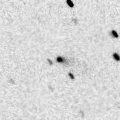
|
It brightened very rapidly. Now it is very bright as 14.9 mag (Aug. 26, Katsumi Yoshimoto). It will approach to the earth down to 0.4 A.U., and will be observable in good condition as bright as 15 mag in September and October.
Date(TT) R.A. (2000) Decl. Delta r Elong. m1 Best Time(A, h)
Sept. 1 0 46.94 -5 12.2 0.497 1.457 148 15.6 2:06 (180, 60)
Sept. 8 0 42.36 -0 3.4 0.462 1.440 155 15.4 1:34 (180, 55)
|
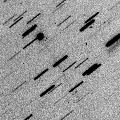
|
Looks almost asteroidal. But it has a very faint tail. It passed near by the earth, and brightened up to 13.9 mag (July 22, Artyom Novichonok). Now it is fading, but still bright as 15.0 mag (Aug. 19, Seiichi Yoshida). It keeps observable in excellent condition in the Northern Hemisphere. It locates extremely low in the Southern Hemisphere.
Date(TT) R.A. (2000) Decl. Delta r Elong. m1 Best Time(A, h)
Sept. 1 18 18.86 42 10.2 1.157 1.684 101 15.9 19:34 (180, 13)
Sept. 8 18 5.79 40 55.8 1.300 1.742 97 16.2 19:10 (177, 14)
|
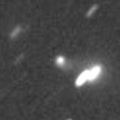
|
Jakub Cerny reported the comet brightened in late July. Now it is 14.5 mag, a bit brighter than this ephemeris still now (Aug. 20, Jakub Cerny). It will be observable in good condition in the Southern Hemisphere while fading gradually after this. It will locate somewhat low in the Northern Hemisphere.
Date(TT) R.A. (2000) Decl. Delta r Elong. m1 Best Time(A, h)
Sept. 1 23 1.77 -27 42.4 2.674 3.639 159 16.0 0:21 (180, 83)
Sept. 8 22 57.99 -28 27.8 2.743 3.692 157 16.2 23:46 (180, 83)
|
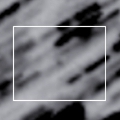
|
First return of a new periodic comet discovered in 1994. Brightening rapidly. Now it is 16.9 mag (Aug. 18, E. Bryssinck). It will brighten up to 13.5 mag and will be observable in good condition from autumn to winter.
Date(TT) R.A. (2000) Decl. Delta r Elong. m1 Best Time(A, h)
Sept. 1 19 17.97 30 17.0 1.075 1.785 117 16.4 20:34 (180, 25)
Sept. 8 19 16.25 28 54.0 1.042 1.726 114 16.1 20:05 (180, 26)
|
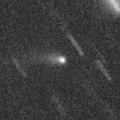
|
Now it is 16.1 mag (Aug. 20, Hiroshi Abe). It will brighten up to 15 mag from autum to winter. In the Northern Hemisphere, it keeps observable for a long time until the comet fades out. It is not observable in the Southern Hemisphere, except for 2013 spring, but the comet locates extremely low only.
Date(TT) R.A. (2000) Decl. Delta r Elong. m1 Best Time(A, h)
Sept. 1 13 38.65 71 5.6 2.804 2.610 68 16.4 19:05 (161,-25)
Sept. 8 13 34.51 69 59.8 2.763 2.572 68 16.3 19:10 (159,-27)
|
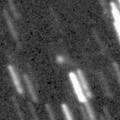
|
Now it is 16.6 mag (Aug. 26, V. Gerke, A. Novichonok). It is expected to brighten up to 10 mag from winter to spring in 2013. In the Northern Hemisphere, it keeps observable in good condition until 2013 April. It is not observable now in the Southern Hemisphere. It will become observable after 2013 April, but it keeps locating low.
Date(TT) R.A. (2000) Decl. Delta r Elong. m1 Best Time(A, h)
Sept. 1 2 12.75 87 23.3 3.449 3.479 83 16.6 3:35 (180,-32)
Sept. 8 2 14.04 88 35.0 3.342 3.411 85 16.4 3:12 (180,-34)
|
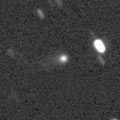
|
Now it is 16.0 mag (Aug. 23, A. Diepvens)�$B!#�(BIt brightens up to 16 mag from autumn to winter. It keeps observable in good condition for a long time until the comet fades out in the Northern Hemisphere. It is not observable until 2013 summer in the Southern Hemisphere. Juan Jose Gonzalez reported that it is extremely bright visually at 11.3 mag on Aug. 22.
Date(TT) R.A. (2000) Decl. Delta r Elong. m1 Best Time(A, h)
Sept. 1 9 37.98 63 30.9 4.045 3.587 56 16.6 4:55 (211,-31)
Sept. 8 9 43.63 64 27.3 3.962 3.577 60 16.5 4:45 (210,-30)
|

|
The condition of this apparition is bad, and it was not observable around the perihelion passage. Now it is 16.5 mag (Aug. 25, Yasukazu Ikari). It will be fading after this, and will be fainter than 18 mag in late October.
Date(TT) R.A. (2000) Decl. Delta r Elong. m1 Best Time(A, h)
Sept. 1 2 8.50 2 57.4 1.958 2.691 127 16.7 3:27 (180, 52)
Sept. 8 2 5.66 2 38.2 1.926 2.729 134 16.8 2:57 (180, 52)
|
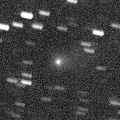
|
Now it is 16.6 mag (Aug. 20, Hiroshi Abe). It tends to brighten after the perihelion passage. It keeps observable at 16-17 mag from 2012 to 2013. It locates somewhat low in the Northern Hemisphere.
Date(TT) R.A. (2000) Decl. Delta r Elong. m1 Best Time(A, h)
Sept. 1 16 25.39 -20 42.5 2.978 3.130 89 17.1 19:05 (123, 67)
Sept. 8 16 31.82 -21 13.3 3.075 3.134 83 17.2 19:10 (113, 63)
|
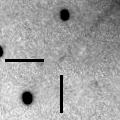
|
It was observed at 17 mag in 2011 autumn. It will be observable at 17 mag in good condition again from autumn to winter in 2012. It locates low in the Southern Hemisphere.
Date(TT) R.A. (2000) Decl. Delta r Elong. m1 Best Time(A, h)
Sept. 1 6 5.97 20 16.1 3.177 2.941 67 17.2 4:55 (219, 24)
Sept. 8 6 13.90 21 4.1 3.099 2.954 72 17.2 4:45 (216, 25)
|
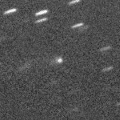
|
Now it is 17.3 mag (Aug. 25, V. Gerke, A. Novichonok). It keeps 17 mag for a long time from 2009 to 2013.
Date(TT) R.A. (2000) Decl. Delta r Elong. m1 Best Time(A, h)
Sept. 1 22 57.32 12 45.6 7.523 8.470 158 17.2 0:17 (180, 42)
Sept. 8 22 52.18 12 18.2 7.522 8.484 161 17.2 23:40 (180, 43)
|
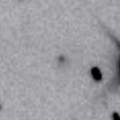
|
First return of a new periodic comet discovered in 2005. Now it is 16.7 mag (Aug. 16, Yasukazu Ikari). It will be observable in excellent condition at 17-18 mag until November.
Date(TT) R.A. (2000) Decl. Delta r Elong. m1 Best Time(A, h)
Sept. 1 23 24.25 5 32.1 1.213 2.196 162 17.3 0:44 (180, 49)
Sept. 8 23 19.72 5 31.1 1.196 2.192 168 17.2 0:12 (180, 49)
|
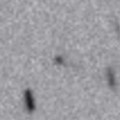
|
Although it was extremely faint as 20.0 mag on May 27 (Hidetaka Sato), it brightened rapidly. Now it is 17.4 mag (Aug. 16, Yasukazu Ikari). It keeps observable in good condition at 17 mag from summer to autumn.
Date(TT) R.A. (2000) Decl. Delta r Elong. m1 Best Time(A, h)
Sept. 1 23 35.00 4 7.3 1.089 2.072 161 17.3 0:55 (180, 51)
Sept. 8 23 28.58 5 14.9 1.073 2.068 167 17.3 0:21 (180, 50)
|
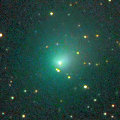
|
It brightened up to 10 mag from autumn to winter in 2011. Now it is appearing in the morning sky again in the Southern Hemisphere. It has already faded down to 17.5 mag (Aug. 16, Jakub Cerny). It keeps observable in good condition while fading graudlaly after this. It will be hardly observable in the Northern Hemisphere.
Date(TT) R.A. (2000) Decl. Delta r Elong. m1 Best Time(A, h)
Sept. 1 5 5.89 -31 12.8 4.331 4.432 89 17.4 4:55 (265, 71)
Sept. 8 5 5.88 -33 13.7 4.319 4.492 93 17.5 4:45 (268, 75)
|
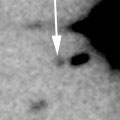
|
Now it is 18.0 mag (May 27, K. Hills). In the Southern Hemisphere, it keeps observable at 17 mag in good condition for a long time from 2012 to 2013. It is not observable at all in the Northern Hemisphere.
Date(TT) R.A. (2000) Decl. Delta r Elong. m1 Best Time(A, h)
Sept. 1 7 4.25 -49 27.8 5.161 4.989 74 17.5 4:55 (307, 50)
Sept. 8 7 7.25 -51 20.3 5.115 4.976 76 17.5 4:45 (311, 52)
|
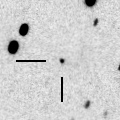
|
Now it is 16.8 mag (Aug. 26, Catalina Sky Survey). It keeps 17.5 mag until September. It is observable in excellent condition in the Southern Hemisphere. But it locates somewhat low in the Northern Hemisphere.
Date(TT) R.A. (2000) Decl. Delta r Elong. m1 Best Time(A, h)
Sept. 1 21 27.47 -19 55.0 0.626 1.609 158 17.5 22:43 (180, 75)
Sept. 8 21 25.71 -16 41.6 0.656 1.619 152 17.7 22:14 (180, 71)
|
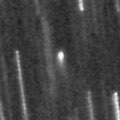
|
It approached to the earth down to 0.17 A.U. in July, and brightened up to 14.5 mag (July 13, Juan Jose Gonzalez). Now it is fading. It has already faded down to 17.3 mag (Aug. 18, E. Bryssinck). It keeps observable in good condition after this in the Northern Hemisphere. It locates low in the Southern Hemisphere.
Date(TT) R.A. (2000) Decl. Delta r Elong. m1 Best Time(A, h)
Sept. 1 20 4.05 38 38.8 0.434 1.285 120 17.8 21:21 (180, 16)
Sept. 8 20 16.22 38 23.9 0.481 1.320 120 18.1 21:05 (180, 17)
|

|
First return of a new periodic comet discovered in 1997 at 17 mag. It is expected to keep 17 mag for a long time from 2012 to 2014. The ephemeris says it is already 18 mag, but it has not been recovered yet. Toru Yusa reported that the comet was not detected, fainter than 19.5 mag, on July 18.
Date(TT) R.A. (2000) Decl. Delta r Elong. m1 Best Time(A, h)
Sept. 1 2 23.81 15 26.2 3.468 4.069 120 17.9 3:43 (180, 40)
Sept. 8 2 24.07 15 25.8 3.366 4.050 126 17.8 3:15 (180, 40)
|
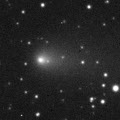
|
It brightened up to 12 mag in 2010. Now the comet is around the aphelion. But it will be observable at 17.5 mag in good condition from autumn to winter.
Date(TT) R.A. (2000) Decl. Delta r Elong. m1 Best Time(A, h)
Sept. 1 4 40.27 20 23.7 4.460 4.528 87 17.9 4:55 (198, 33)
Sept. 8 4 42.47 20 32.0 4.361 4.538 93 17.9 4:45 (194, 33)
|
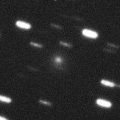
|
It was observed at 12.5 mag on Apr. 1, as bright as expected (Michael Jager). However, it has faded very rapidly. Hidetaka Sato reported that it has been already too faint to catch, fainter than 19.0 mag on June 25. It locates high in the Northern Hemisphere. In the Southern Hemisphere, it will never be observable again.
Date(TT) R.A. (2000) Decl. Delta r Elong. m1 Best Time(A, h)
Sept. 1 5 44.74 47 36.9 3.398 3.255 73 20.3 4:55 (201, 3)
Sept. 8 5 50.27 47 53.5 3.377 3.327 78 20.5 4:45 (199, 3)
|
|
![]()
 168P/Hergenrother
168P/Hergenrother P/2012 NJ ( La Sagra )
P/2012 NJ ( La Sagra ) C/2011 A3 ( Gibbs )
C/2011 A3 ( Gibbs ) 262P/2012 K7 ( McNaught-Russell )
262P/2012 K7 ( McNaught-Russell ) C/2012 L1 ( LINEAR )
C/2012 L1 ( LINEAR ) C/2012 L2 ( LINEAR )
C/2012 L2 ( LINEAR ) C/2012 A2 ( LINEAR )
C/2012 A2 ( LINEAR ) 71P/Clark
71P/Clark 152P/Helin-Lawrence
152P/Helin-Lawrence P/2011 N1 ( ASH )
P/2011 N1 ( ASH ) C/2008 S3 ( Boattini )
C/2008 S3 ( Boattini ) 261P/2012 K4 ( Larson )
261P/2012 K4 ( Larson ) 160P/LINEAR
160P/LINEAR C/2010 G2 ( Hill )
C/2010 G2 ( Hill ) C/2012 C1 ( McNaught )
C/2012 C1 ( McNaught ) P/2012 O3 ( McNaught )
P/2012 O3 ( McNaught ) 189P/NEAT
189P/NEAT P/1997 C1 ( Gehrels )
P/1997 C1 ( Gehrels ) 65P/Gunn
65P/Gunn C/2011 Q2 ( McNaught )
C/2011 Q2 ( McNaught )![]()





































